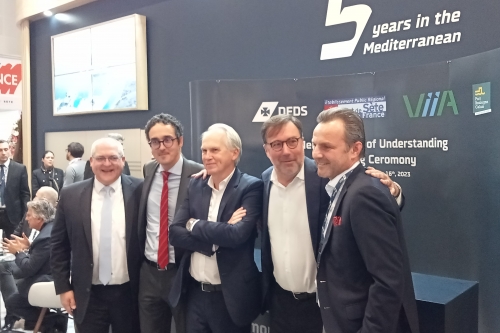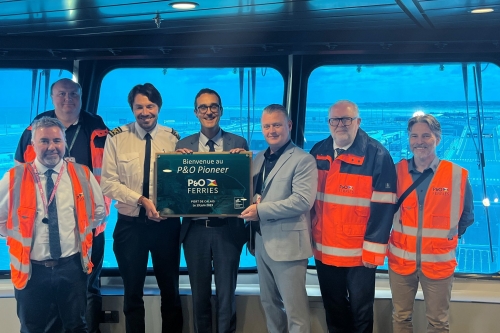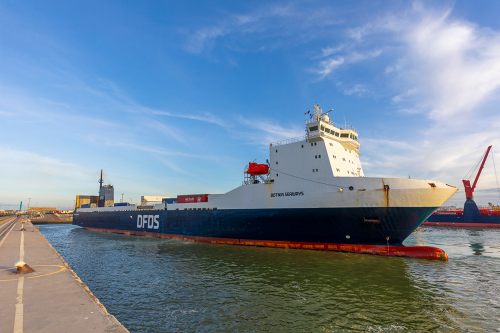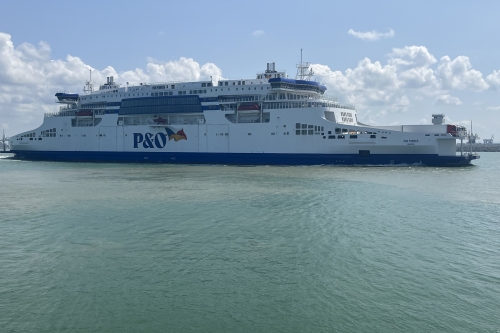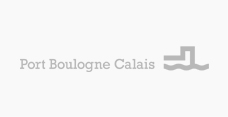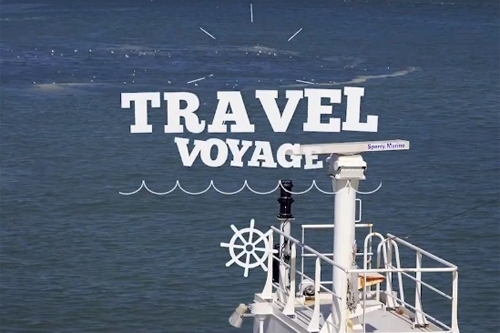Intermodal Terminal
The Calais multimodal terminal allows transshipment of trailers, mobile bodies and containers between the road, rail and sea transport modes.
The port of Calais, an unrivalled intermodal hub to diversify your logistics organisations while reducing your carbon footprint
At the heart of a strong intermodal network, the port of Calais offers high-capacity, fast, flexible and agile solutions to organize your flows safely between the British Isles and the entire European continent.
At the crossroads of road, maritime and rail solutions, the port of Calais provides you with the services and means to optimise the working time of your drivers and transport vehicles while reducing CO2 emissions.
The port of Calais offers:
- 50 departures a day to Dover
- Daily interconnections, and nearly 40 trains per week, with rail motorways to/from Le Boulou (Spain Border), Italy (Turin) , Mâcon (Lyon) and Sète.
An intermodal fleet run by emodal, an innovative collaborative information system dedicated to unaccompanied transshipment providing simplicity, traceability and time-saving.
Find more about our multimodal offer
This hub consists of a twofold rail infrastructure:
Rail motorway hub
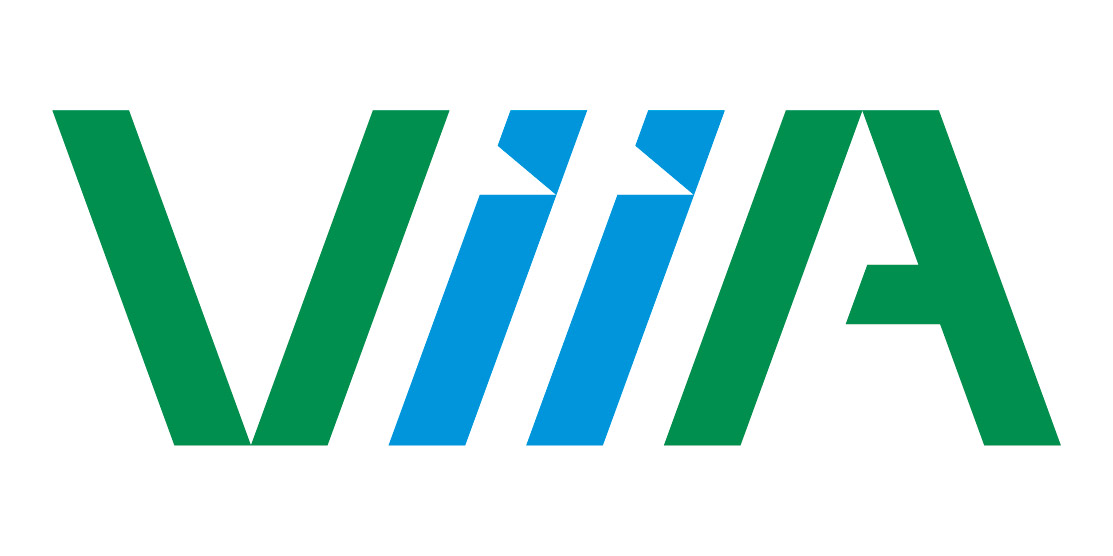 This hub, operated by Viia (a subsidiary of SNCF), allows rail transport of trailers, cranable (P400) or not. Viia uses the Lohr Industries technology. This allows the transhipment of non-cranable trailers (without any specific investment by the transport operator).
This hub, operated by Viia (a subsidiary of SNCF), allows rail transport of trailers, cranable (P400) or not. Viia uses the Lohr Industries technology. This allows the transhipment of non-cranable trailers (without any specific investment by the transport operator).
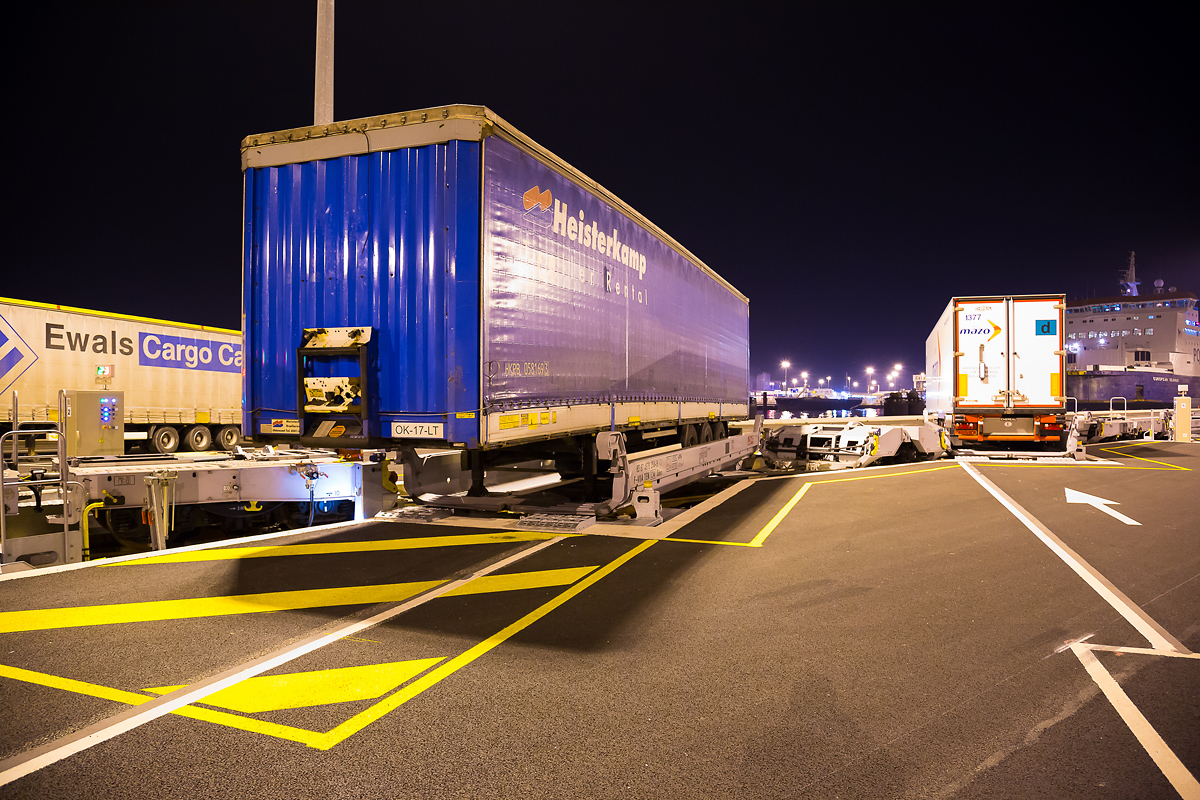
Viia operates several trains per day in each direction offering a transport frequency reflecting the ferries' organisation. This frequency is crucial to represent a logistic and commercial interest for transport operators. By accepting all types of trailers and with a high frequency, the rail superhighway provides a competitive modal shift solution.
Transport operator customers on the rail superhighway can organise their unaccompanied maritime transhipment. They are invited to contact Viia to benefit from the IT tools developed for them (E-Modal system).
Trailers coming from or destined for the rail superhighway are not limited to maritime transhipment. They can take the road or come from it freely without any specific constraints.
Viia proposes three rail motorway lines from / to the port of Calais
- - Calais / Le Boulou (Perpignan - = 5 round-trips/week
- - Calais / Orbassano (Turin - IT) = 5 round-trip/week (temporarily suspended)
- Calais / Mâcon (Rhône Alpes region) = 5 round-trips/week
- Calais / Sète
Contact : sales@viia.com
combined transport hub
This hub allows access by combined trains. It has two recessed 750-metre tracks so that RTG cranes and reachstackers may cross the tracks.
This hub is secure and available for the development of new activities.
Find more about Intermodal Terminal
Functions:
A RoRo/Ropax Ferry maritime transhipment hub is located at the Calais facility. It enjoys secure, dedicated fast road access.
The hub can ensure the transhipment of unaccompanied trailer and container traffic between ferries or ro-ro ships and the road and rail modes.
Equipment: The hub has a trailer storage capacity of about 600 trailers and 2 single-deck linkspans for ship handling.
Storage takes place in a single park controlled by a digital tool: e-modal.
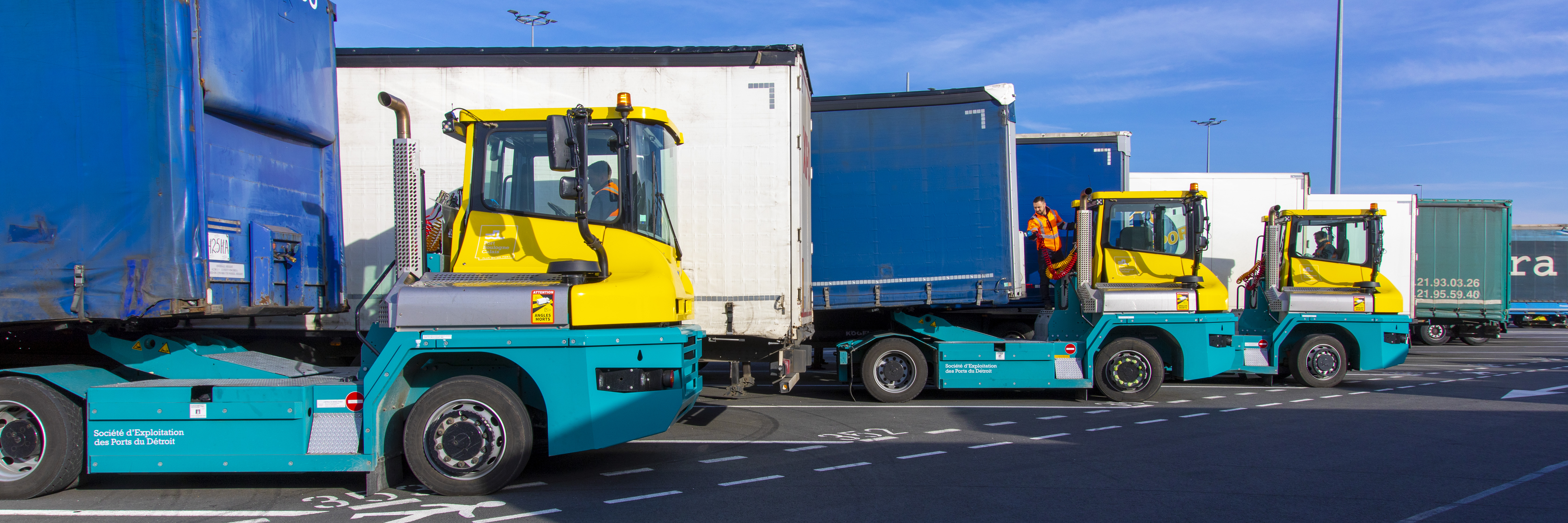
Reception, vehicle checking and ferry and RoRo ship loading/unloading are performed by the haulage section of Boulogne Calais Port.
Services:
The haulage section has an ultra-modern IT tool: E-Modal. This allows the complete dematerialisation of procedures and ensures security, traceability and quality of service for customers.
The yards are equipped with ultra-modern access control equipment connected to E-Modal (analysis of registrations, automated diagnostics, CCTV, security checks). The results are available for customers.
The haulage section handles not only unaccompanied ferry traffic, but also ships stopping over on the 2 single-deck linkspans directly incorporated in the multimodal terminal.
For more details, see Infrastructure & Tooling section.
Find more about Intermodal terminal


